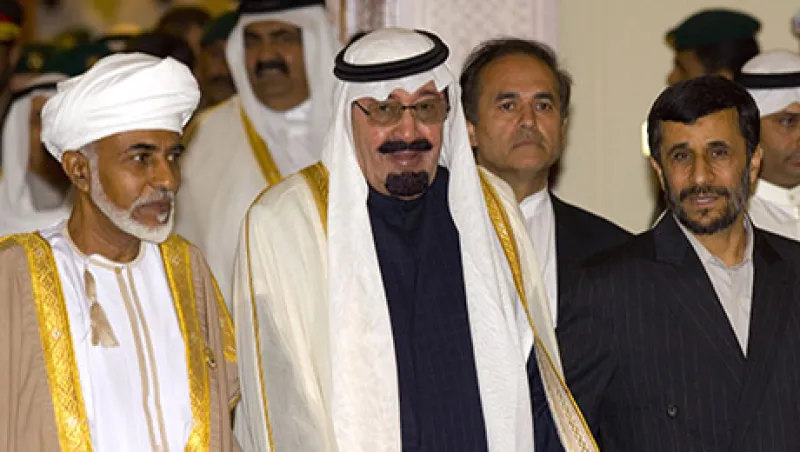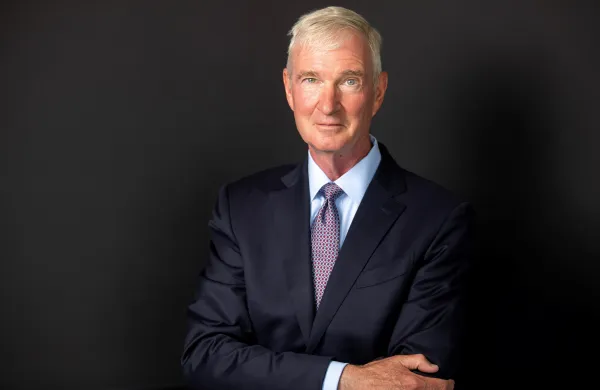Saudi Arabia, according to 2013 World Bank statistics, is the 19th wealthiest economy in the world in terms of GDP and, with the exception of Turkey, is by far the biggest economy in the Middle East–North Africa region. With 260 billion barrels in proven oil reserves, Saudi is rightly considered the central bank of crude oil, as it is the only oil-producing country with significant spare capacity, to the tune of 1 million or more barrels per day (bpd).
More on that later. State-owned gas and oil company Saudi Aramco is the most profitable enterprise on the planet. It produces 9.5 million bpd of crude oil, which trades for roughly $100 and costs $4 to $8 per barrel to extract. This translates into $350 billion in annual revenue per year, with profit margins exceeding 90 percent. Not surprisingly, the Saudi Arabian Monetary Agency, the world’s seventh-largest sovereign wealth fund, has roughly $730 billion in assets.
More striking is the social and demographic picture: According to the CIA World Factbook, Saudi’s population is 27.3 million people, of which nearly 47 percent are under the age of 25. Among those aged 20 to 25, there is a 30 percent unemployment rate. The exciting perspective of Saudi Arabia is not the legacy oil wealth under the desert but the implications for the young population living above it.
Local employment targets have been ratcheted significantly higher since the Arab Spring, not just in Saudi Arabia but across the region. This was clear from Investec’s meetings with major Western oil companies. BP, Total, Occidental, Schlumberger and Halliburton all talked about bolstering the employment and training of Saudi citizens. I quickly became more optimistic for the future of this young, primarily urban population. The most striking comment came from Schlumberger’s country manager for Saudi Arabia. He is a Lebanese national who boasts a degree in mechanical engineering, an MBA from Insead and a year at the Massachusetts Institute of Technology, and he has worked in 12 countries on four continents during a 28-year career with the giant oil services company. He mentioned that Schlumberger would soon employ 60 percent local staff in Saudi Arabia and that the company could continue to operate effectively in the event of any turmoil that required the evacuation of expatriates.
Naturally, challenges persist: Labor productivity ranks toward the bottom of the range. The Arab Labor Organization estimates worker productivity in Saudi Arabia to be only 17 percent of that of the U.S. industrial worker. Women have had the right to vote only since 2011 and make up only 15 percent of the workforce. Diversification away from oil and into other sectors such as banking and manufacturing stand to speed up the so-called Saudization of the nation’s workforce.
But for the time being, Saudi Arabia remains first and foremost a petroleum state. I set out with three specific questions: How depleted are the giant Saudi oil fields? How much capital is Saudi Aramco directing toward natural gas rather than oil? and Which investable companies are best placed to take advantage of the answers to the first two questions?
Half of Saudi Arabia’s oil reserves are found in seven fields: Ghawar, Safaniya, Khurais, Qatif, Shaybah, Zuluf and Abqaiq. Ghawar, discovered in 1948, accounts for half of total Saudi crude production. It is difficult not to have some skepticism about the ability of these aged reservoirs to continue producing at recent rates. What I discovered in meetings only made me raise my eyebrow even more.
The number of drilling rigs in the country has increased from 30 in 2005 to around 170 in 2014. During those nine years, production has crept up from 8.5 million to 9.5 million bpd in 2005 to 9 million to 10 million bpd at present. The true production capacity number remains elusive, although Saudi Aramco assured us that 12 million bpd was at the higher end. I suspect that is a target rather than a reality, however. The annual upstream spending by Saudi Aramco has also doubled from $7 billion to more than $15 billion since 2010. This suggests that two things are happening. First, the giant fields are indeed being worked harder than ever, with a spur in investment to mitigate the underlying reservoir depletion. Second, Saudi Aramco has clearly recognized that it can ease the burden on the country’s demand for crude oil by producing more natural gas. Don’t forget that during summer, when there is peak demand for air conditioning, Saudi Arabia still burns almost 750,000 bpd of crude oil for electricity generation. Some of these new rigs are undoubtedly being lined up for unconventional gas drilling, with Ali Al-Naimi, the minister of petroleum and mineral resources, indicating that Saudi sits on 600 trillion cubic feet of unconventional, or tight, natural gas, the fifth-largest reserves in the world.
I came away with the following framework: Decline rates in the big seven oil structures range from 2 to 6 percent a year. Domestic demand for crude (currently 3 million bpd) is growing at 5 percent a year. So the kingdom needs to replace 500,000 bpd each year if it intends to preserve the oil legacy for future generations.
The unconventional gas discussion permeated all of the meetings with operators and service companies alike, and it is there that I found the most directly investable ideas. The service companies I met with (Schlumberger, Halliburton, Baker Hughes, Weatherford International, Cameron, National Oilwell Varco) all see increasing activity in Saudi Arabia, with consensus expectation for a further 15 to 20 percent rise in the combined oil and gas rig count in 2014. Two sources quoted a target rig count of 300 by the end of 2015, which if achieved would equate to a tenfold increase since 2005. Schlumberger has the largest market share and generates twice the revenue from the Middle East region of its nearest rival, Halliburton. The latter said its Saudi revenues could grow 40 to 50 percent in 2014. Baker Hughes has the greatest potential for margin improvement.
No discussion about Saudi would be complete without some attempt to understand better its role as the swing producer of the Organization of the Petroleum Exporting Countries and the Saudis’ view of the global oil market. One thing stood out: Stability in the region is far more important than the short-term oil price.
At home, there is unease over the declining health of both King Abdullah, aged 89, and his brother, 78-year-old Crown Prince Salman. In a break with tradition, rather than waiting for the death of the king, the next two successors were announced at the end of March: Crown Prince Salman, followed in line by Prince Muqrin, aged 68, the youngest surviving son of King Abdulaziz , the founder of modern Saudi Arabia. The desire to retain stability is clear.
Thawing U.S. relations with longtime Saudi rival Iran and the rise of political Islam throughout the region have prompted the Saudis to assert their influence in the Middle East. On March 5 the country withdrew its ambassador from Doha, citing Qatar’s “destabilizing influence” in the Gulf. I believe that under extreme circumstances, Saudi Arabia would lower its oil production to 8 million to 8.5 million bpd during the next two years if Iranian sanctions were lifted and Iraqi production increased. I don’t attribute a high probability to this scenario (Iranian ramp-up will be slower, and Iraq is going backward despite the short-term uptick in production), but it is worth considering. At the same time, Saudi Arabia’s rapidly growing domestic budget and ongoing payments to Egypt necessitate that oil prices remain at or above $100 per barrel. The production cut should keep both the Finance Ministry and the neighbors happy.
In the light of this informative and thought-provoking trip, I continue to think that oil prices will be supported above $100 per barrel, that production declines will hamper meaningful supply growth and that on a global basis the best-placed service and drilling companies will hold the key to the world’s increasingly challenging reservoirs.
Tom Nelson is the co–portfolio manager of global energy strategies at Investec Asset Management in London.
See Investec ’s disclaimer.
Get more on emerging markets .






